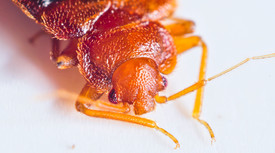 Consumer Health and Food Safety fee increases resuming in 2023
In the spring of 2016, the Pima County Board of Supervisors approved a fee increase for operators of both fixed and mobile food establishments. The approved ordinance OKed a four-year plan that included an increase of 25% of the total increase amount each year starting with the 2017 calendar year. Following the approved schedule, the final 25% increase was supposed to go into effect when operators renewed their license in 2020.
Then the COVID-19 pandemic hit in 2020. In an effort to address the economic impact of the pandemic on restaurant operators, The Board of Supervisors unanimously agreed to grant county administration the authority to temporarily waive the final scheduled fee increase in 2020 and again in 2021. That final incremental increase is now set to go into effect during the 2023 calendar year.

Holiday food safety tips
The holiday season is upon us, and with that season comes a greater potential for foodborne illnesses.
Families and friends gather at restaurants for large meals that are shared, then taken home. The meals and tables are often larger and cause restaurants to be busier than other times of the year. This year, the food service industry is also dealing with a reduced workforce. With all of these factors in play, now is the time to ensure food safety practices continue to be diligently followed.
|

Getting to know the sinks in your kitchen
Depending on your facility, the kitchen may have anywhere from three to 20 sinks. Identifying the sinks may come naturally to those of us who have been in and out of the kitchen many times before.
But when we bring in new kitchen employees or if we are part of bigger establishments like hotels and resorts that have staff in other areas, the use and purpose of different sinks may not be obvious. When we are doing inspections, it’s pretty common to find infractions involving sinks for this reason. Below we break down the differences among each sink, how to identify them, and the biggest struggles with each sink in preventing contamination.
|

Pest Prevention in Food Establishments
Did you know that pests such as rodents, cockroaches and flies are capable of transmitting germs onto foods, which can makie someone very sick? Rodents pick up germs and filth on their legs while crawling across sewage, garbage and decaying matter and then transfer these germs onto foods and food contact surfaces. In addition, pests can contaminate food and food equipment with their fecal droppings and urine. These unsanitary conditions can lead to a foodborne illness.
|

Public Records Requests
The Consumer Health and Food Safety Division (CHFS) has a disclosure site that allows the general public quick and easy access to local inspections conducted by the Pima County Health Department. The inspection reports on the disclosure site provide an overview of the environmental health observations made by staff during a site visit.
Routine inspection information is available for food, school campuses, campgrounds, public/semi-public pools and lodging facilities. If interested in obtaining a copy of a particular inspection or several inspections at a facility that are not available on the disclosure site, you would need to submit a public records request.
|

Return to the Rating System
As we start to move past the COVID-19 pandemic and transition back to life where mask mandates and social distancing measures are easing up, Consumer Health and Food Safety (CHFS) is announcing the return to our food rating system in January 2023.
|

Use Limitation for Different Types of Metals
Types of cookware used to make food can be just as culturally significant as the meals themselves. However, over time we have learned that not all metals can be considered food-safe. Here are some metals that are not approved by the 2013 FDA Food Code and some suggested replacements.
|

What is Active Managerial Control
The term “active managerial control” is used to describe the implementation of food safety management systems to prevent, eliminate, or reduce the occurrence of food poisoning (foodborne illness) risk factors. It represents a preventive rather than reactive approach when an inspector points out an uncontrolled risk factor. The manager becomes the inspector on a daily basis.
|
Consumer Health & Food Safety launched a Facebook group in August to keep our permitted facilities updated and informed of current public health and safety recommendations and requirements. The social media platform also will keep members up to date on other information as it emerges, such as recalls or outbreaks. In order to best serve you and the businesses we regulate this Facebook group will function as a private group, open only to individuals that operate a business that is permitted by our division.
We are always seeking to improve our communication methods and ensure information is accessible and quickly delivered to constituents. Help us spread the word by sharing the link to our Facebook group page. We are looking forward to connecting and partnering with you!
|